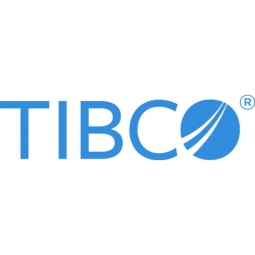Customer Company Size
Large Corporate
Region
- America
Country
- United States
Product
- TIBCO Cloud API Management
- TIBCO Cloud Mashery
- TIBCO Cloud API Management - Local Edition
Tech Stack
- RESTful services
- API management
Implementation Scale
- Enterprise-wide Deployment
Impact Metrics
- Customer Satisfaction
- Productivity Improvements
- Revenue Growth
Technology Category
- Platform as a Service (PaaS) - Connectivity Platforms
- Application Infrastructure & Middleware - API Integration & Management
Applicable Industries
- Retail
Applicable Functions
- Sales & Marketing
- Business Operation
Services
- System Integration
- Software Design & Engineering Services
About The Customer
Macy’s is a well-known American department store chain with a rich history dating back to 1858. The company operates numerous stores across the United States and has a significant online presence. Macy’s is committed to providing an exceptional customer experience, both in-store and online. The company has a strong focus on innovation and technology to meet the evolving needs of its customers, particularly the millennial market. Macy’s aims to be a leader in the retail industry by leveraging advanced technologies to enhance customer satisfaction and drive sales.
The Challenge
Macy’s needed to adapt to the increasing mobile traffic and provide a seamless mobile experience. The company faced challenges with optimizing their mobile site, which was not frequently used due to slow speeds and lack of optimization. The impact of not resolving these issues would be dissatisfied customers, decreased brand identity, lower sales, and higher customer turnover.
The Solution
Macy’s implemented TIBCO Cloud API Management to develop innovative mobile application features aimed at the millennial market. The solution included building lightweight APIs using modern, high-speed RESTful services to deliver data quickly to customers. Macy’s also integrated social networks and introduced features like image search within their mobile app. TIBCO Cloud API Management provided Macy’s with the ability to monitor API usage, quickly release documentation to developers, and ensure security through key management. TIBCO Professional Services facilitated the adoption of TIBCO Cloud API Management - Local Edition, which operates behind Macy’s firewall, enhancing the speed and efficiency of their internal applications.
Operational Impact
Quantitative Benefit

Case Study missing?
Start adding your own!
Register with your work email and create a new case study profile for your business.
Related Case Studies.

Case Study
Improving Production Line Efficiency with Ethernet Micro RTU Controller
Moxa was asked to provide a connectivity solution for one of the world's leading cosmetics companies. This multinational corporation, with retail presence in 130 countries, 23 global braches, and over 66,000 employees, sought to improve the efficiency of their production process by migrating from manual monitoring to an automatic productivity monitoring system. The production line was being monitored by ABB Real-TPI, a factory information system that offers data collection and analysis to improve plant efficiency. Due to software limitations, the customer needed an OPC server and a corresponding I/O solution to collect data from additional sensor devices for the Real-TPI system. The goal is to enable the factory information system to more thoroughly collect data from every corner of the production line. This will improve its ability to measure Overall Equipment Effectiveness (OEE) and translate into increased production efficiencies. System Requirements • Instant status updates while still consuming minimal bandwidth to relieve strain on limited factory networks • Interoperable with ABB Real-TPI • Small form factor appropriate for deployment where space is scarce • Remote software management and configuration to simplify operations

Case Study
How Sirqul’s IoT Platform is Crafting Carrefour’s New In-Store Experiences
Carrefour Taiwan’s goal is to be completely digital by end of 2018. Out-dated manual methods for analysis and assumptions limited Carrefour’s ability to change the customer experience and were void of real-time decision-making capabilities. Rather than relying solely on sales data, assumptions, and disparate systems, Carrefour Taiwan’s CEO led an initiative to find a connected IoT solution that could give the team the ability to make real-time changes and more informed decisions. Prior to implementing, Carrefour struggled to address their conversion rates and did not have the proper insights into the customer decision-making process nor how to make an immediate impact without losing customer confidence.

Case Study
Digital Retail Security Solutions
Sennco wanted to help its retail customers increase sales and profits by developing an innovative alarm system as opposed to conventional connected alarms that are permanently tethered to display products. These traditional security systems were cumbersome and intrusive to the customer shopping experience. Additionally, they provided no useful data or analytics.

Case Study
Ensures Cold Milk in Your Supermarket
As of 2014, AK-Centralen has over 1,500 Danish supermarkets equipped, and utilizes 16 operators, and is open 24 hours a day, 365 days a year. AK-Centralen needed the ability to monitor the cooling alarms from around the country, 24 hours a day, 365 days a year. Each and every time the door to a milk cooler or a freezer does not close properly, an alarm goes off on a computer screen in a control building in southwestern Odense. This type of alarm will go off approximately 140,000 times per year, equating to roughly 400 alarms in a 24-hour period. Should an alarm go off, then there is only a limited amount of time to act before dairy products or frozen pizza must be disposed of, and this type of waste can quickly start to cost a supermarket a great deal of money.

Case Study
Supermarket Energy Savings
The client had previously deployed a one-meter-per-store monitoring program. Given the manner in which energy consumption changes with external temperature, hour of the day, day of week and month of year, a single meter solution lacked the ability to detect the difference between a true problem and a changing store environment. Most importantly, a single meter solution could never identify root cause of energy consumption changes. This approach never reduced the number of truck-rolls or man-hours required to find and resolve issues.




